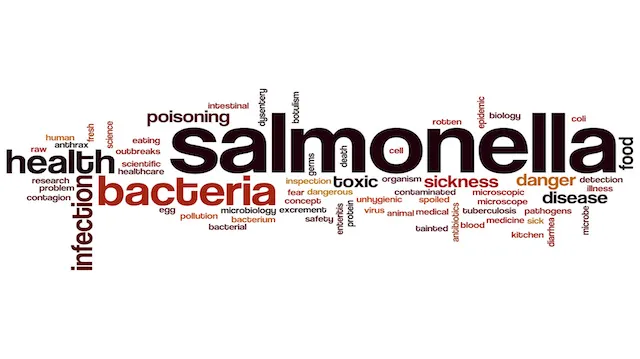When we think of Salmonella poisoning, the most common foods that come to mind are undercooked meats and mishandled raw veggies. Rarely do we suspect our spices. They’re powdered and packaged so neatly, who would have guessed that Salmonella may be lurking inside?
The Food and Drug Administration (FDA) recently released a troubling report concerning Salmonella in imported spices. The report found that 6.6 percent of all imported spices tested contained Salmonella. On top of that, 12 percent of the tested spices were found to contain “filth,” including animal hair and insects, due to “inadequate packing or storage conditions.”
The FDA also stated that most of the spices sold in the United States are imported.
In their report, the FDA wrote:
“Spice shipments offered for entry into the U.S. had an overall prevalence for Salmonella of approximately 6.6 percent during the 2007 to 2009 fiscal years, about twice the average prevalence of all other imported, FDA-regulated foods.”
To arrive at these results, the FDA investigated over 7,000 batches of spices, of various types, imported from 79 nations. The investigation began in 2013. No specific spice, or country, stood out as the culprit — and this in itself is particularly worrying.
The report authors wrote:
“The presence of pathogens, such as Salmonella, and filth in spices is a systemic challenge and that the problem relates in part to poor or inconsistent use of appropriate controls to prevent contamination. Spice shipments from 79 countries were examined for Salmonella, and we found that 37 of the 79 countries had Salmonella-contaminated shipments, indicating that contamination of spice shipments with Salmonella is not limited to just a few source countries.”
Just a few of the spices found to contain Salmonella were black pepper, basil, red pepper, cumin, curry powder, oregano, white pepper, and sesame seeds.
At this time, the FDA is not recalling any spices, or recommending that spice aficionados change their seasoning habits. The FDA is instead planning to perform more stringent monitoring of spice imports, and their manufacturers.
So, what can we do to avoid contamination? The answer is certainly not to stop using spices altogether — they have a wealth of health benefits, and a proper meal needs proper seasoning, as any chef and home cook knows. While the Salmonella that may be lurking in those imported, packaged spices in your cabinet is destroyed by cooking, many people like to put raw spices on their meals after cooking (especially black pepper and herbs).

For the herbs and spices that may not be so easy to grow at home, it’s worth it to find a reputable organic retailer. Be sure to ask where the spices come from, and what quality monitoring is performed, especially for the imported varieties. These spices may cost a bit more than those sold in big-name plastic tubes, but they are more likely to be free of contaminants if they are not mass-produced in a large factory.
Besides, who wants their seasoning rife with Salmonella?
—Tanya Rakhmilevich
Tanya is a writer at The Alternative Daily with a passion for meditation, music, poetry, and overall creative and active living. She has a special interest in exploring traditional Eastern remedies and superfoods from around the globe, and enjoys spending time immersed in nature.
Source:
http://www.fda.gov/Food/FoodScienceResearch/RiskSafetyAssessment/ucm487954.htm
